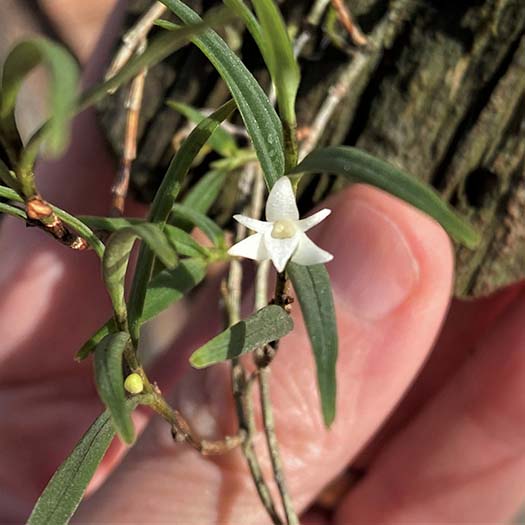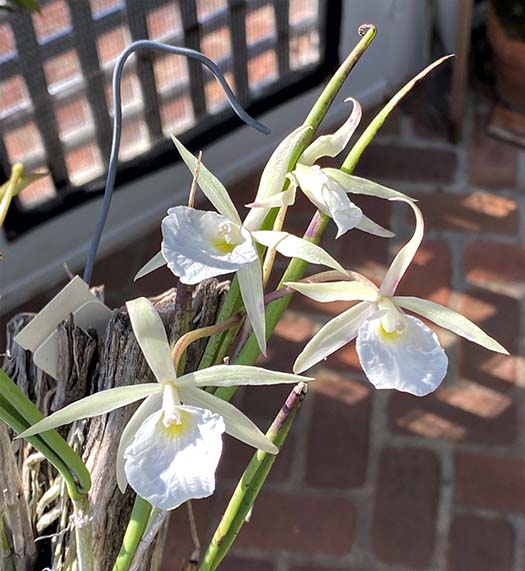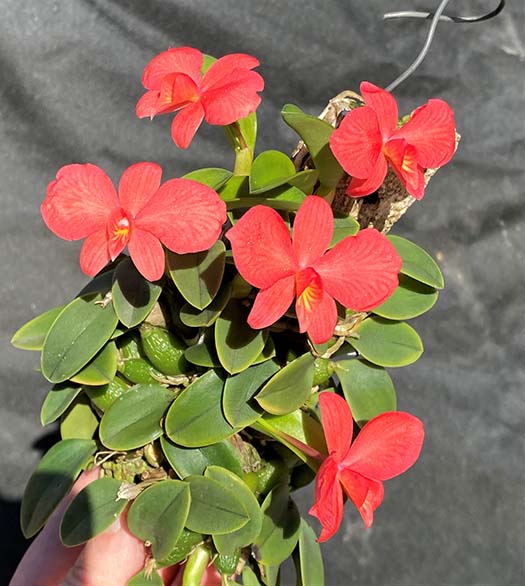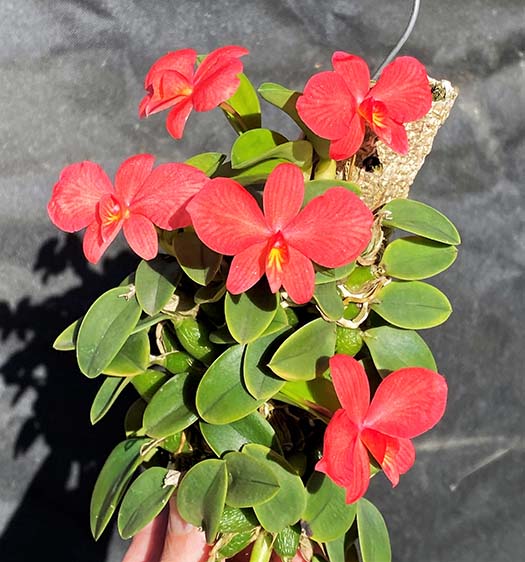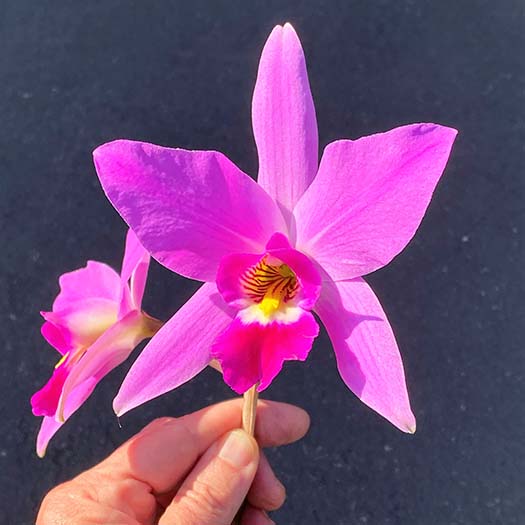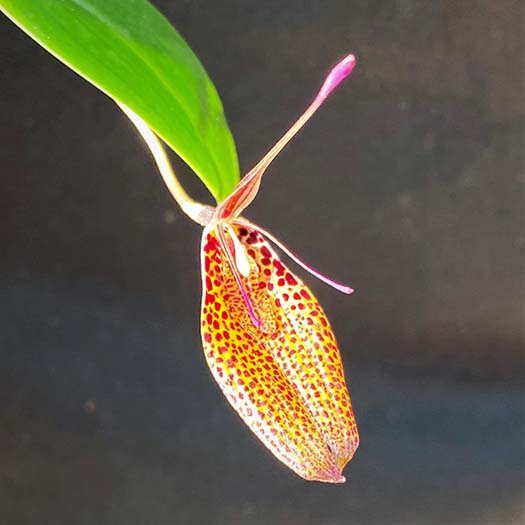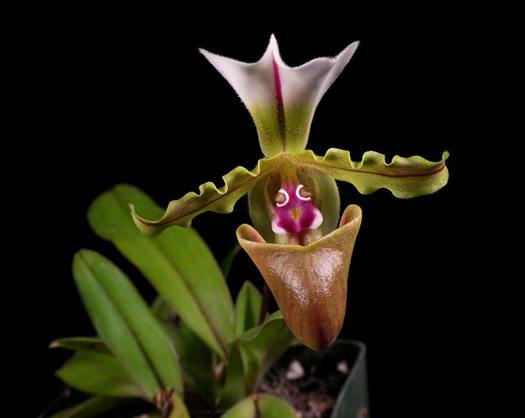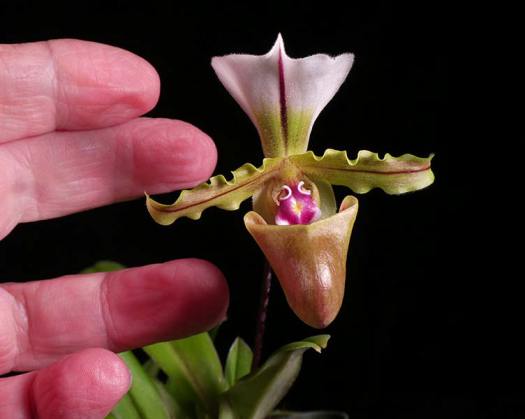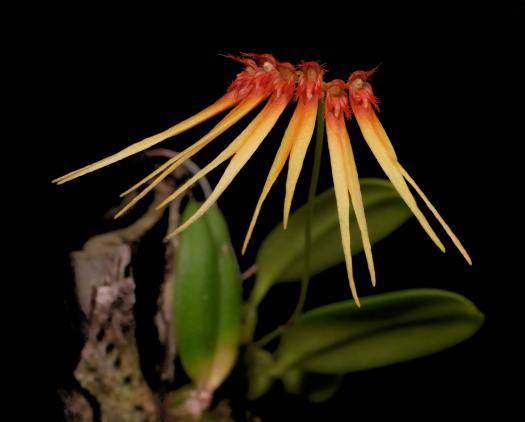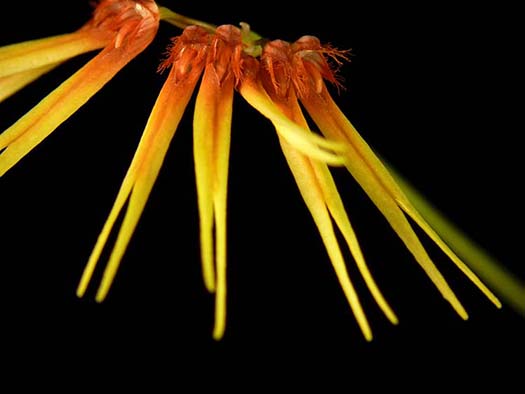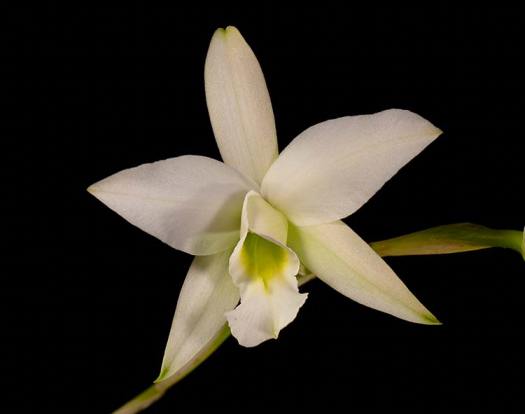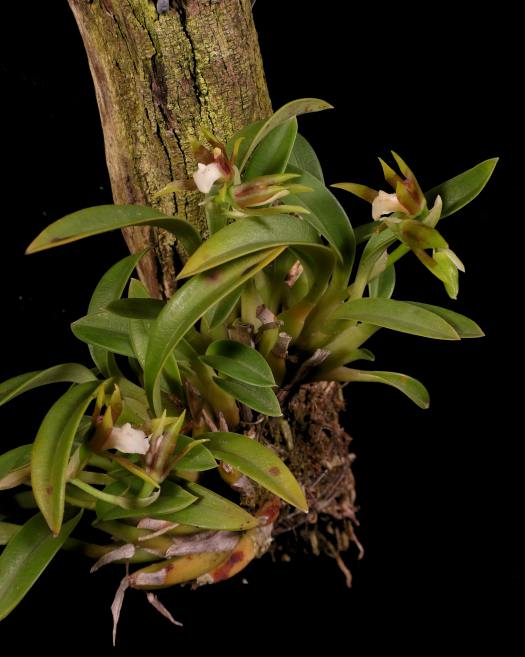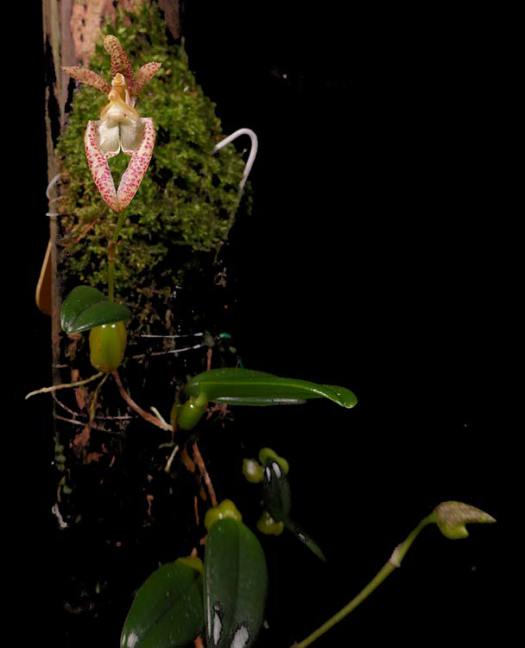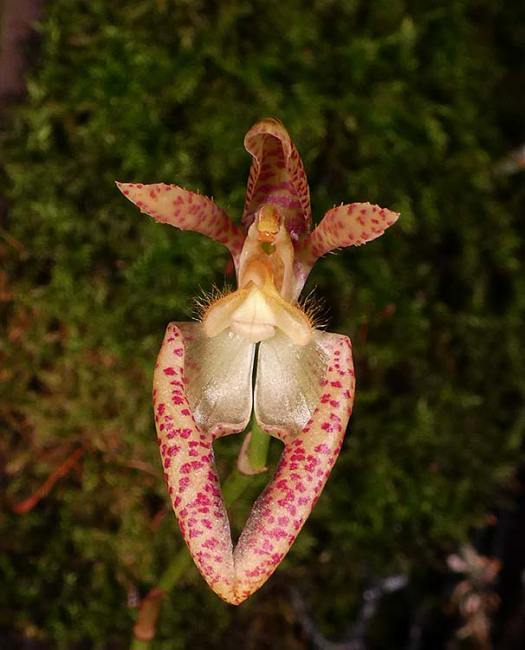December 2020
From Roberta Fox:
|
|
Outside in the Back Yard: |
|
Paphipedilum spicerianumThis is a totally charming litle Paph. This one has taken some patience... quite a few years since it last bloomed, I had forgotten just how cute it is. |
|
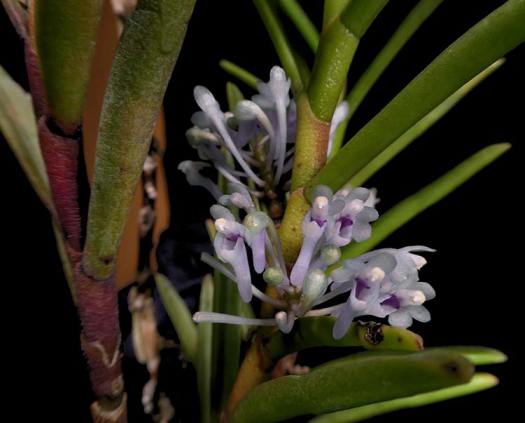
Cleisocentron gokusingiiA nice flush bloom on this true-blue species. With cool nights, the color is definitely better than the last several blooms. The oldest flowers have faded to a pale blue-gray but the newer ones have nice depth of color. This species is often sold as Cleisocentron merrillianum, but the latter has longer, distinctly terete leaves while this one hs shorter, semi-terete leaves. The flowers look identical. |
|
Cirrhopetalum (Bulbophyllum) hirundinisThis cool-growing Bulbophyllum offers brilliant color, and can bloom several times a year. |
|
.jpg)
Laelia anceps (f. gigas x f. roeblingiana)The roeblingiana (peloric form) is nowhere to be seen. I'm sure that the hope for this cross would be to get a large, vigorous peloric form. Perhaps in another generation... The peloric form tends to be small, and a slow grower. This one has the size, form, and vigor of the f. gigas parent. |
|
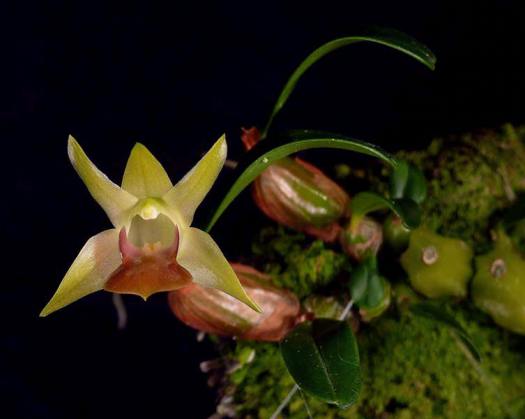
Epigeneium nakaharaeThis Dendrobium relative grows mounted. It is a rambler, and seems to grow and bloom best once it crawls off the slab. |
|
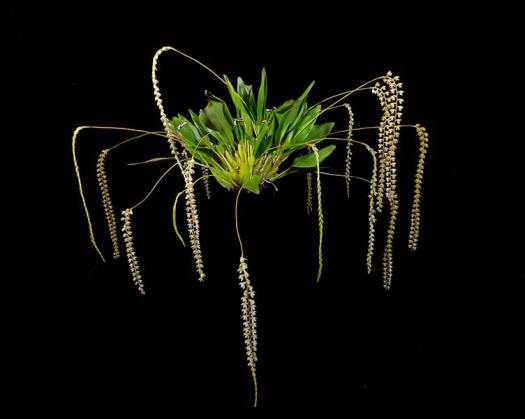 Dendrochilum cobbianumHundreds of tiny flowers on pendant spikes, almost like strings of pearls. It seems to bloom best after it has filled the pot with new growths. |
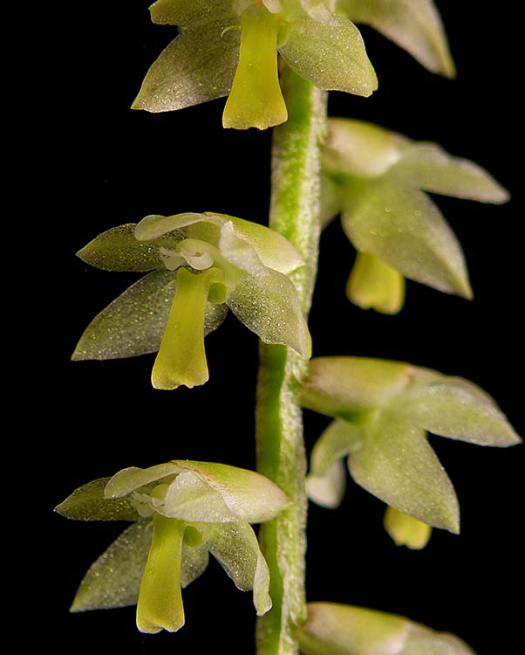 |
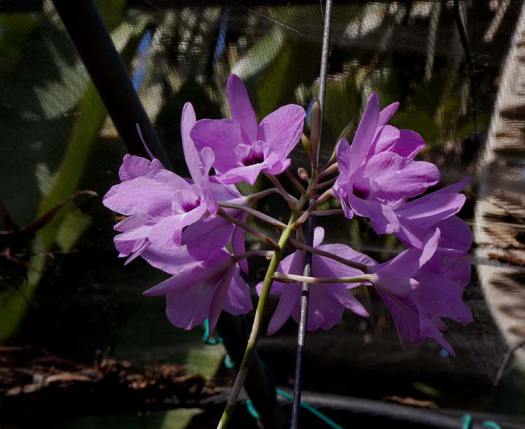 Laelia rubescens f. roseaMounted plant is very floriferous, but flowers are delicate and relatively short-lived. Waiting for semi-alba to bloom, proably next month. |
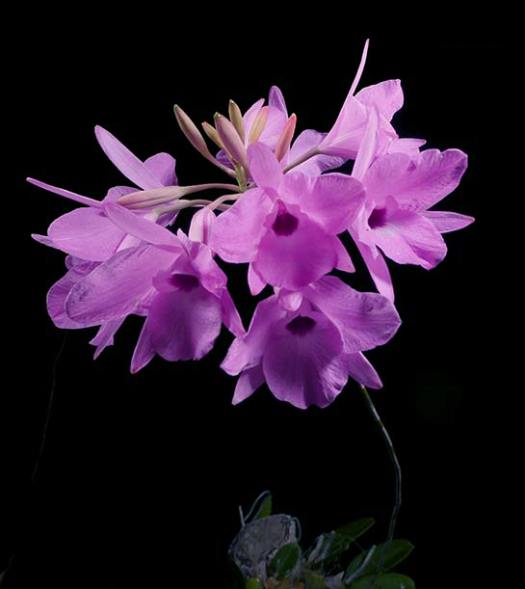 |
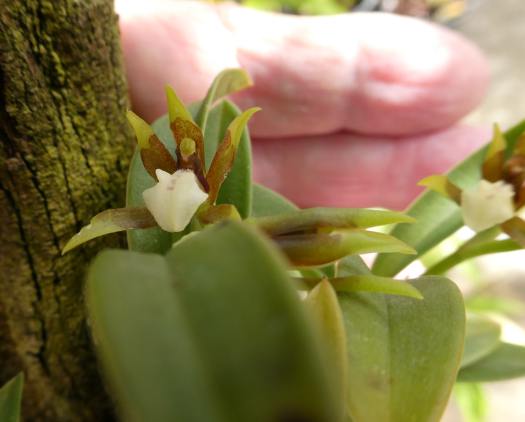
Ada (Brassia) brachypusBrassia (mostly Central America, large spidery flowers) and Ada (mostly South America, smaller flowers) have been lumped together. This one is a miniature version of Ada, my fingers for scale. Flowers are relatively long-lasting, and open over a period of several weeks extending the bloom time even more. |
|
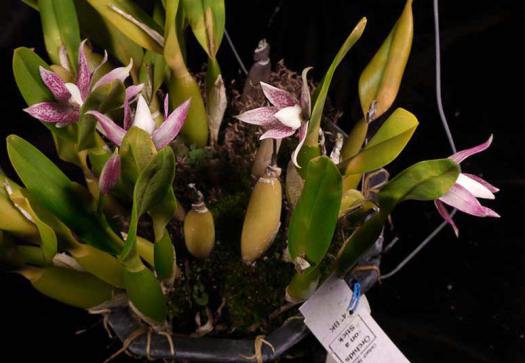 Prosthechea (Encyclia) garcianaThe flowers tend to hide down in the leaves, so difficult to get a photo that shows what a fluch bloom this is. Non-resupinate (lip on top) flowers are intriguing. |
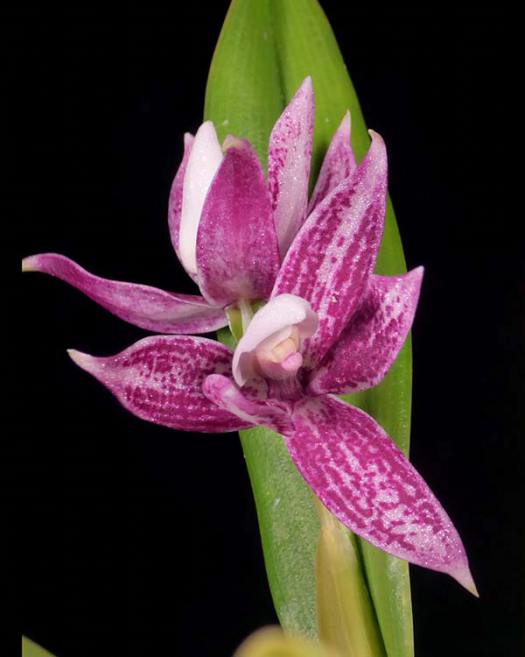 |
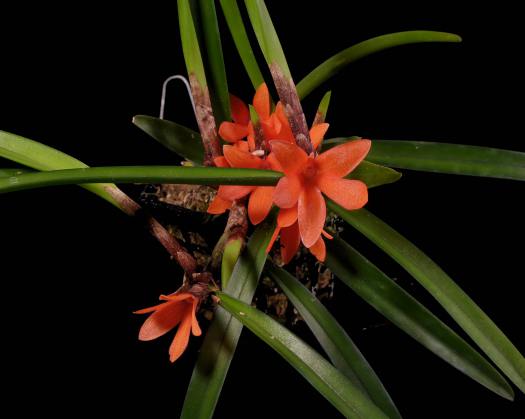
Ceratostylis retisquama (rubra)This species, from the Philippines, has a reputation as a warm-grower. However, when it saw it online, it was listed as "cool to warm". I asked the seller about the contidions under which it had been grown, and was told that the greenhouse went down into the mid 40's F on winter nights. I got it last January, so it has experienced some signinficang cold. A few weeks ago it was into the low 40's while it was in bloom and it still stayed in bloom for about 3 weeks. So clearly it can tolerate cold. It blooms on and off much of the year. |
 |
In the greenhouse... |
|
Bulbophyllum lasiochilumA rambling growth habit, so it needs to grow on a mount. |
|
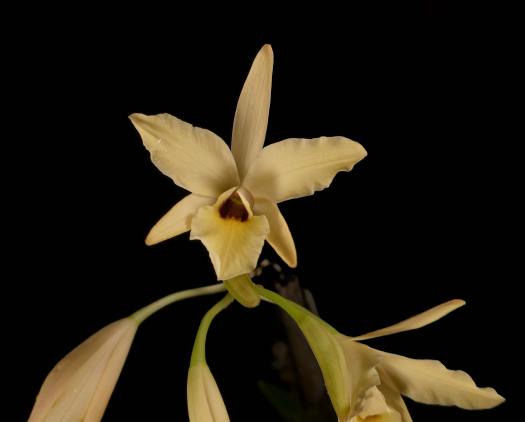 |
|
Laelia aureaIt is closely related to Laelia rubescens, but seems to need to be kept a bit warmer. I tried one outside that didn't survive, it has done much better in the greenhouse. |
|
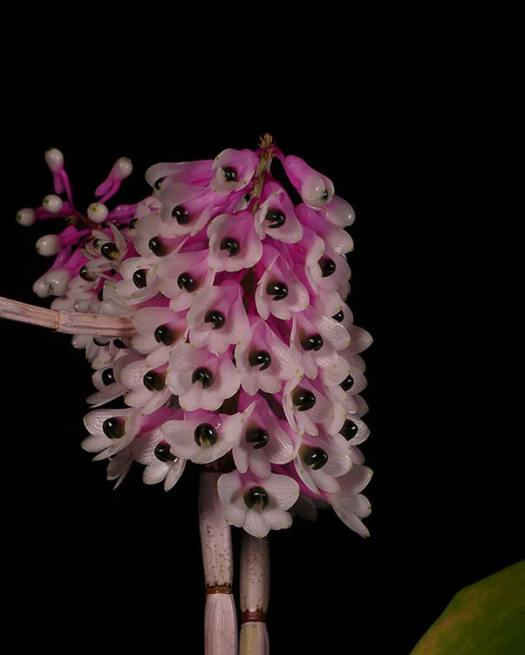 |
|
Dendrobium smilliaeI love the contrast between the black lip and the pink and white flowers. It is native to Papua-New Guinea and northern Australia. Note that it blooms on old, leafless canes. |
|
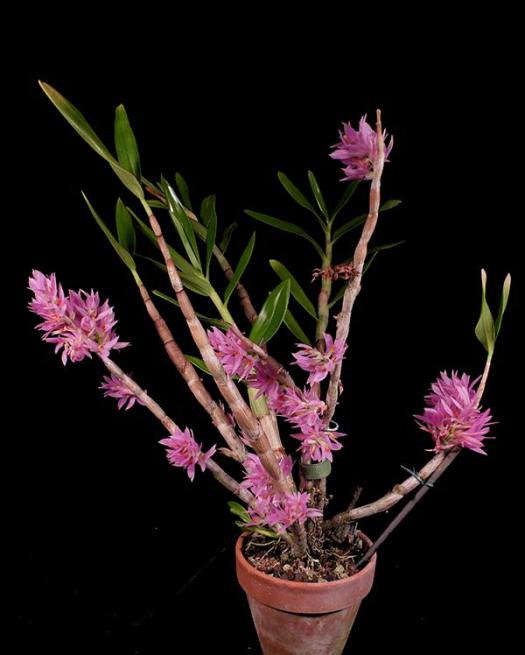 |
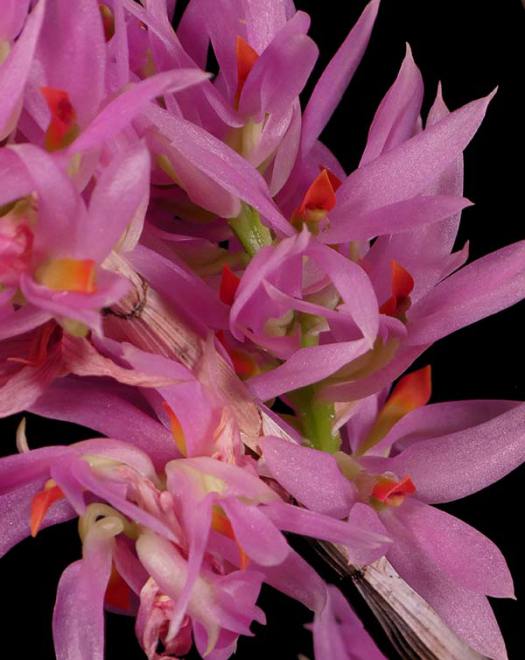 |
Dendrobium bracteosum (x Dendrobium tanii)This plant was labeled "Den. bracteosum x Den. tanii", but Den. tanii is not listed as a separate species anywhere that I could find. (Andy's Orchids website indicates that it is a newly-described species, but doesn't seem to have been fully accepted as such yet.) Den. bracteosum var. tanii is a somewhat smaller plant than the typical Den. bracteosum. So this is either a primary hybrid (if Den. tanii gets accepted as a separate species) or it is Den. bracteosum, a cross of two forms of the species. The flowers last for months, and about the time that the finally fade, a new batch is on the way so it is nearly perpetually in bloom. |
|
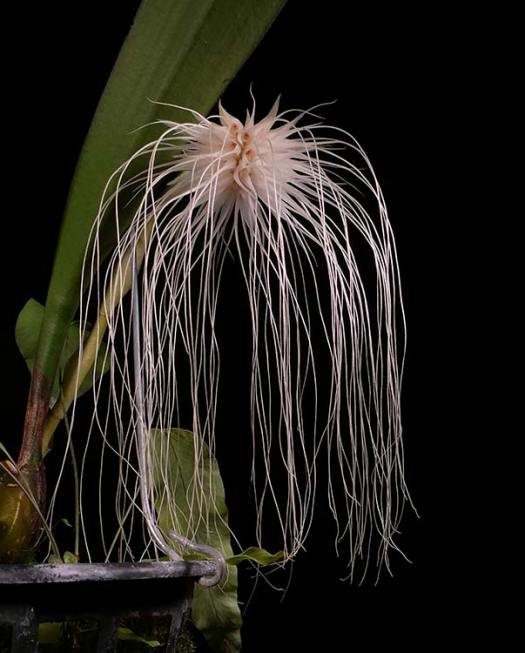 |
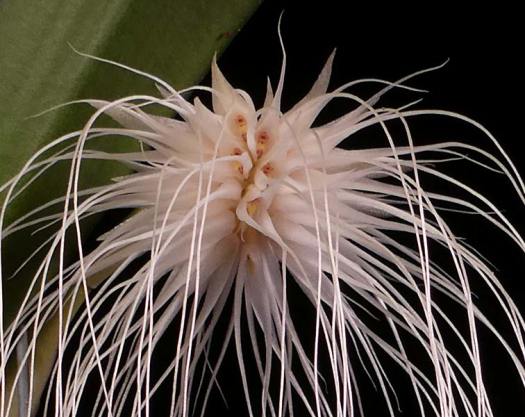
Bulbophyllum medusaeThis display is really a whole group of individual flowers. The inflorescence only lasts a week or so, but is spectacular while it is in bloom. |
